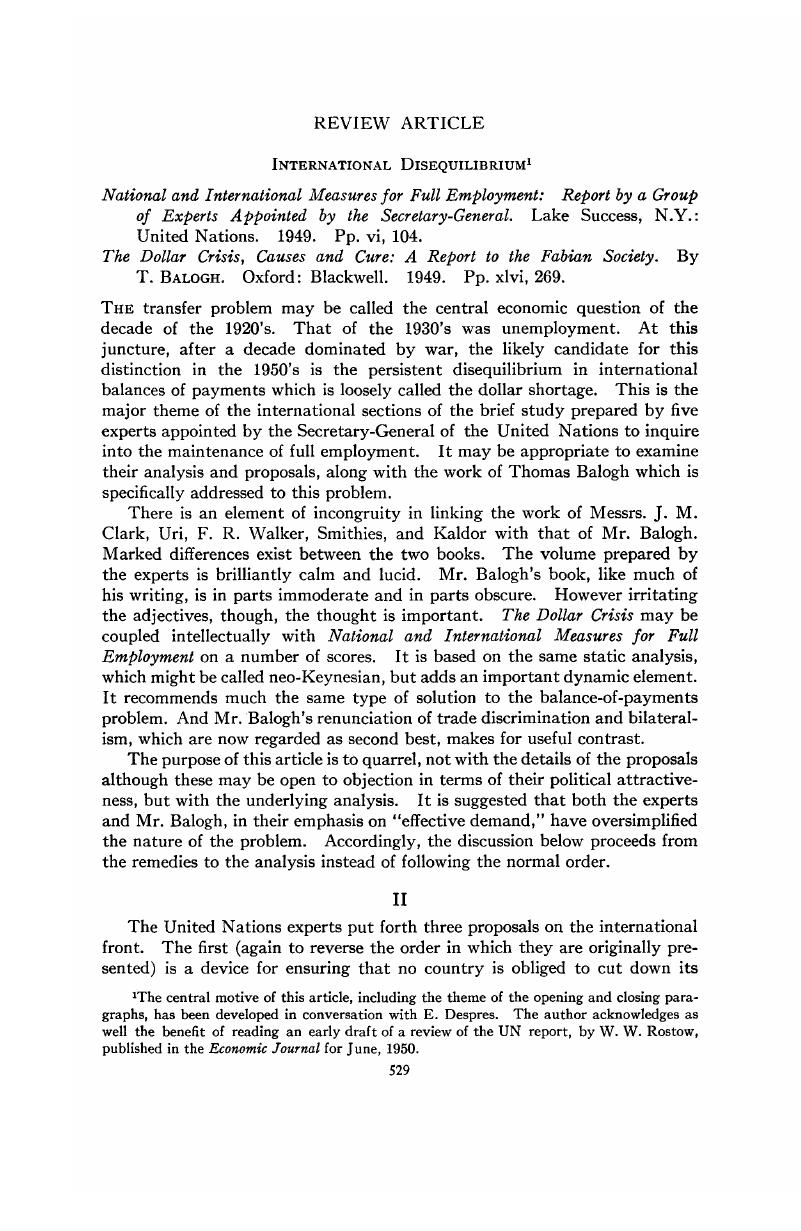No CrossRef data available.
Article contents
International Disequilibrium*
Published online by Cambridge University Press: 07 November 2014
Abstract

- Type
- Review Article
- Information
- Canadian Journal of Economics and Political Science/Revue canadienne de economiques et science politique , Volume 16 , Issue 4 , November 1950 , pp. 529 - 537
- Copyright
- Copyright © Canadian Political Science Association 1950
Footnotes
The central motive of this article, including the theme of the opening and closing paragraphs, has been developed in conversation with E. Despres. The author acknowledges as well the benefit of reading an early draft of a review of the UN report, by W. W. Rostow, published in the Economic Journal for June, 1950.
References
2 The writer has developed this thought at some length in another, as yet unpublished, work. It may be observed here merely that emphasis should be on the word relative. No hard and fast view is implicit in this, either that secular stagnation prevails in the United States or that secular exhilaration is the rule in the underdeveloped areas. It is merely that relative to underdeveloped areas, the United States is secularly short of investment opportunities and long on savings.
3 See, for example, “Implementing Point IV,” The Economist, March 11, 1950, pp. 546, 7.
4 J. M. Clark in a separate concurring statement uses the word “structure” in a rather special sense to refer to economic institutions such as monopoly and wage-price relationships. These are by no means irrelevant in the present context. The main use of the term, however, is with reference to changes in underlying demand or supply conditions which call for a shift of resources or a change in real income. See Polak, J. J., “Exchange Depreciation and International Monetary Stability,” Review of Economics and Statistics, 08, 1947, pp. 173–82.Google Scholar
5 It is tempting to pursue the contrast between depreciation as a defense against deflation abroad, which would be the neo-classical remedy, and this neo-Keynesian view. A neoclassical remedy for structural disequilibrium is probably deflation. But this lies outside of our present thought.
6 A terminological difficulty is encountered here. Mr. Balogh refers to his International Board for Economic Development as a remedy for a “structural” disequilibrium. The analysis, however, fits the type of disturbance which we have called “secular.”
7 It will be remembered that the countries participating in the European recovery programme planned at one time to export several billion dollars more of goods to each other than they planned to import from each other; nor have intra-European payments forecasts of anticipated deficits and surpluses been highly accurate.
8 It should be observed, moreover, that many government investment programmes, like the ill-fated ground-nut scheme, are made on the basis of advice from private industry. The fact that the money is not their own, however, may make the advice less responsible than if the company were to use its own funds.
9 This would not be the case, however, if effective demand were stimulated by transfer payments to those who have been unable to purchase the surplus goods because of low productivity.




